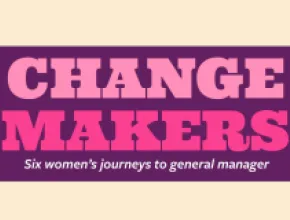If what happened in Vegas actually stayed there, planners in the government meetings field would be breathing much easier today. But between blowback from the lavish Government Services Administration (GSA) shindig on ‘the Strip’ in October 2010 and the recent federal sequestration’s budget impact on government spending, the sector has been shaken to the core.
Here’s a quick overview of the fallout, its impact, and what some groups are doing to help better the situation before it gets even worse.
Cause and Effect
Following the GSA scandal, the U.S. Office of Management and Budget (OMB) in May last year directed each federal agency to spend at least 30 percent less on travel and conferences in fiscal year (FY) 2013 (which began Oct. 1, 2012) than in FY2010, and maintain this level through FY2016.
OMB’s memorandum directing the minimum 30 percent spending reduction had other stipulations, including that senior-level approval must be given for all future conference expenses in excess of $100,000, and which must be reported publicly. Also, the spending of more than $500,000 on a single conference was prohibited.
By late August, GSA announced that policies implemented in April would save taxpayers more than $11 million on meetings, conferences, trainings and travel costs by the end of the fiscal year. It had already eliminated 47 conferences, it said. Then, in February this year it canceled its 2013 Training & Expo set for Orlando in May.
The Society of Government Meeting Professionals (SGMP), however, stated that only one federal meeting planner cited perception concerns as a reason for cancelling registration for SGMP’s annual national education conference, held in New Orleans in May of last year.PageBreak
Venues Take a Hit
Cost-cutting’s impact has had detrimental effects on meeting facilities that rely on government events.
Dolce Hotels & Resorts’ federal government business, for example, was down year-over-year in 2011 and 2012.
“This year is trending the same. The good news is that corporate segments are filling in where we have seen fall-off,” says Teresa White, the company’s senior director of North American global sales. “We are seeing tighter budgets, stricter guidelines, longer approval processes, programs requiring senior government leadership approvals, the omission of F&B from programs, meetings closer to federal facilities, and taking ‘green factors’ into consideration—to name a few of the trends we see.”
In its annual trends survey issued early this year, Benchmark Hospitality International trumpeted business meetings segments that are up, with one sector notably absent.
“Education [particularly engineering and technology], medical, bio tech, high tech, new media, association, not-for-profits, financial services and the incentive segment are all showing signs of recovery for 2013. What’s not won’t surprise anyone—government-related business,” the report states.
According to Hal Powell, Benchmark’s regional vice president of sales and marketing, the company’s federal government business was down a startling 28 percent in 2012 from 2011.
“Part of the decline was due to availability, as our corporate and association group business and overall occupancies did increase in 2012,” he says, qualifying the drop-off.
Major facilities that rely the most heavily on government business have been hit the hardest.
The 917-room National Conference Center (NCC) in Leesburg, Va., one of the country’s largest conference venues, at one time derived 65 percent of its business from federal government groups, much of it training.
“Now it is 29 percent of total business. We have lost 45 percent of our government business,” says Kurt Krause, general manager of the NCC, who points out that the center does not take transient business and has no golf course or spa.
In addition to cancellations, Krause explains that government planners also have ‘‘so many hoops to jump through and there have been delays in allocating money.” In February, he notes, one federal group of 600 for three nights moved from April to August. At press time the center had not filled the April space.
Following the GSA scandal, NCC, which is managed by Aramark Conference Centers and has 250,000 square feet of meeting space, was vocal in blogs, press releases and on radio. It promoted the message, “Why Other Agencies Shouldn’t Be Punished Because of GSA’s Bad Behavior.” It described the government’s reaction as “draconian measures that severely limit training and leadership development, resulting in a negative financial effect on hotels and conference centers, particularly with hourly employees.” PageBreak
Action and Advocacy
Industry groups have stepped into the fray as well.
The American Hotel & Lodging Association (AH&LA) last August announced it had protected per diem rates, which GSA had finally decided to freeze, from further decreases. “While certainly not ideal, the rate freeze is a far less radical approach than the crippling move that GSA had contemplated,” it stated.
It had blocked, it said, a move for FY2013 by GSA to arbitrarily slash per diems and change the methodology by which they are reached. GSA abandoned the idea and per diems were frozen at FY2012 levels for the fiscal year beginning Oct. 1.
Per diem rates are the maximum rates federal employees can be reimbursed for travel. Using Smith Travel Research (STR) figures, GSA calculates them based on the average daily rate of mid-priced hotel rooms, taking out luxury and economy rooms, and then discounting what it finds by 5 percent.
Last June, AH&LA learned that GSA was prepared to radically change that methodology by removing the data of an entire tier of mid-priced hotels in calculating the average, excluding most hotels in many large cities.
The standard per diem lodging rate of $77, which covers most areas (about 2,600 counties), remained the same; daily meals and incidental expense tiers would also remain unchanged for FY 2013, and range from $46 to $71.
Per diem rates for almost 400 “nonstandard areas”—those frequently traveled by federal employees and which are reviewed annually—would also remain the same.
For example, depending on season, Manhattan’s per diem rates range from $204 to $295; Washington, D.C.’s, from $169 to $226; and Chicago’s from $130 to $190. Each also had a meals/incidental expense allowance of $71.
The American Society of Association Executives (ASAE) took the lead when it came to possible adverse congressional legislation for the meetings industry.
Chris Vest, ASAE’s public policy director, says that provisions in Congress intended to rein in government conference spending had far-reaching implications, and would have effectively ended government employees’ participation in many private-sector meetings and conferences.
One provision in various bills, for example, restricted employees to one private-entity conference a year, and another required government agencies to produce quarterly itemized reports of all federal conference spending.
ASAE had more than 2,100 organizations join a sign-on letter urging Congress to revise the language, easing restrictions in proposed legislation. It was successful; by the end of the 112th Congress, one less restrictive bill had passed the House and three had remained in the Senate.
“We did outreach and it seemed to go pretty well. We continue to educate Capitol Hill on the positive benefits of attending private sector meetings,” Vest says.
Navigating the Maze
For government planners seeking guidance with venue selection and per diem levels, the GSA has two key resources worth perusing: its FedRooms listing of properties extending rates that match the government per diem, and its GSA Schedules resource, taking the approval and negotiation steps out of the process. The SGMP also offers support. (See adjoining stories for details.)
Tony Bartlett is a longtime contributor to Meetings Focus and a dedicated follower of fiscal responsibility.






